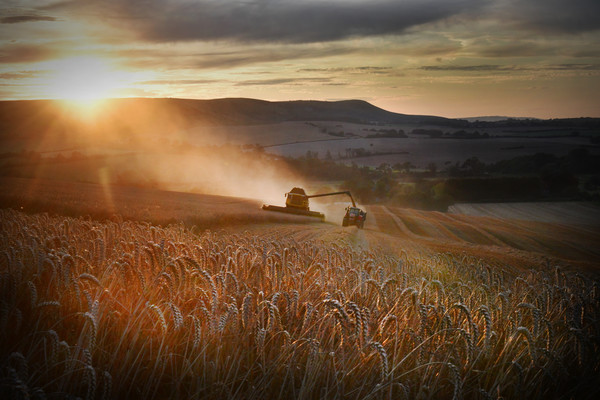
Tractors: Markets hold up, but the economic situation is worrying
Tractor sales fall in the first six months of the year on all major world markets but nevertheless, confirm high volumes. Demand for mechanical equipment driven by the transition to Agriculture 4.0 and sustainable practices. The uncertainty of the geopolitical scenario
The first six months of the year mark a slight slowdown for the global tractor market compared to the extraordinary volumes touched in 2021 but confirm the sector on sales levels that are still higher than in previous years. The "slowdown" has affected all major benchmark countries.
Indian market is still at the top. The U.S. is down 13 percent. India, which had closed 2021 with its all-time high (900 thousand vehicles sold, +28.2% over 2020), files the first half of 2022 with 443 thousand registered machines, marking -5.7% compared to the same period last year. Should this trend continue in the year's second half, it is likely that, despite the decline, the Indian market may not stray too far from the record volumes of 2021. Sales also declined in the U.S. (-13.4%), but with the number of vehicles sold in the half-year (144 thousand) exceeding not only 2020 (143 thousand), but - more importantly - 2019 (128 thousand tractors registered). It is worth noting that the sharp increase in sales seen in the United States between 2019 and 2020, even compared to previous years, was boosted by the massive agricultural aid package the federal government enacted to counter the effects of the Covid-19 pandemic. Still, in North America, Canada recorded 15 thousand vehicles sold (-5%), thus remaining at 2021 levels.
The Old Continent performance. Registrations are also down on the other side of the Atlantic, where Europe as a whole has lost 8.1 percent in the first half of the year as a result of about 82 thousand tractors registered. In unit terms, this is a limited downturn since the negative balance compared to the first half of last year is only 7 thousand units, moreover to be divided among the 30 countries surveyed by CEMA, the European Committee of Agricultural Machinery Manufacturers. Noteworthy, just in Europe, the good performance of the "minor" markets (Czech Republic +31%; Hungary +46.5%, Serbia +41%, Croatia +10%), while the main reference countries close the six months with a slight decrease. Germany falls back by 8.4 percent on account of 15,700 registered units, the United Kingdom by 8 percent (7,200 units), Spain by 14.2 (5,000), and Italy by 12 percent (11,050). France is basically unchanged, closing the first six months of the year with 15,400 tractors registered, a 3.4 percent contraction. Shifting the viewpoint eastward, Turkey stands at 29,577 vehicles sold, 2,500 less than in the first half of 2021.
Agriculture 4.0 drives the demand for machinery. The sector's performance in the first six months of the year seems to indicate that the drop in sales is not so much due to an actual reversal of the extraordinary dynamism of 2021 but rather represents a technical decline, a physiological settling after the peaks reached in the past months. On the main reference markets, volumes recorded between January and June are, in fact, higher than those witnessed in pre-pandemic years, suggesting that the sector continues to express high demand for tractors and other agricultural machinery. The liveliness of the demand, in a global scenario marked by unstable factors, is due not only to the increase in food needs as a result of the growth of the world population or the new consumption styles that are emerging across the board in many countries but above all to the transition of national agricultural systems toward digital farming practices (so-called Agriculture 4.0) and more environmentally sustainable processing. Agriculture is thus undergoing a paradigm shift, and to do so, it needs the latest generation of means of production that are compatible with this transition. In many cases, and here we are thinking of Italy, this process is coupled with and supported by a system of subsidies designed to boost investment in the latest technologies sustaining the industry.
An uncertain scenario. In the short and medium term, the trend of the tractor market appears to be affected not only by expansive factors related to the transition, as mentioned above, to digital farming models but also by elements of uncertainty related to the evolution of the overall geopolitical scenario and the commodity market. These two aspects are, as known, closely related. To date, the agricultural machinery sector has managed to absorb commodity price increases, intervening to a limited extent in price lists and without producing a depressive effect on demand. The main unknown concerns the consequences that an indefinite continuation of the conflict in Ukraine may have on the global economy and, consequently, on the agricultural and agricultural machinery sectors. Clearly, the risk is that as price tensions increase, the agricultural machinery sector may reverse course from the growth of past months. Yet not everywhere. In fact, manufacturers in the more technology-poor countries and those that do not adhere to the sanctions regime against Russia could benefit from such a situation and are, therefore, less penalized in the commodity market. Companies that compete not so much on quality and innovation but on price would be the ones to benefit most. In the long run, the geopolitical crisis could establish a competitive advantage for these manufacturers.








